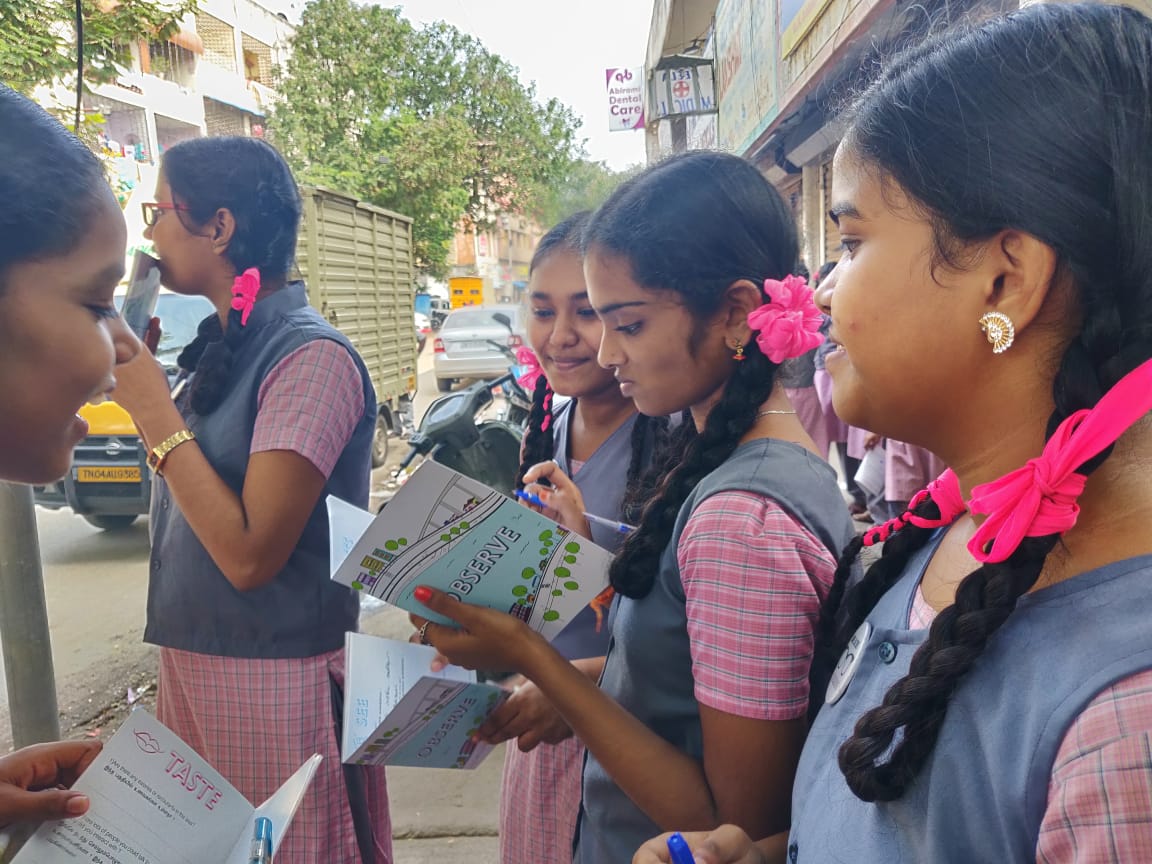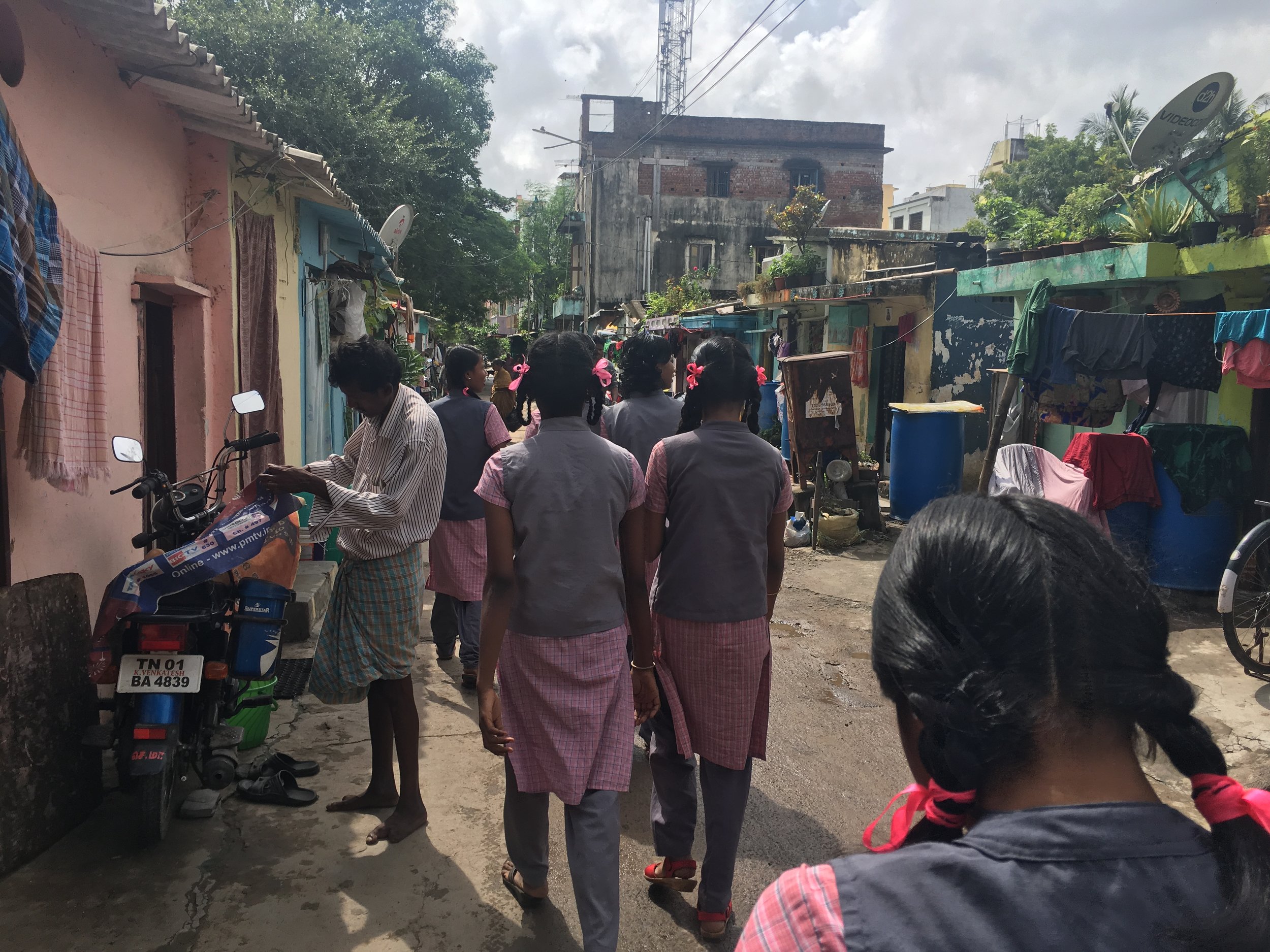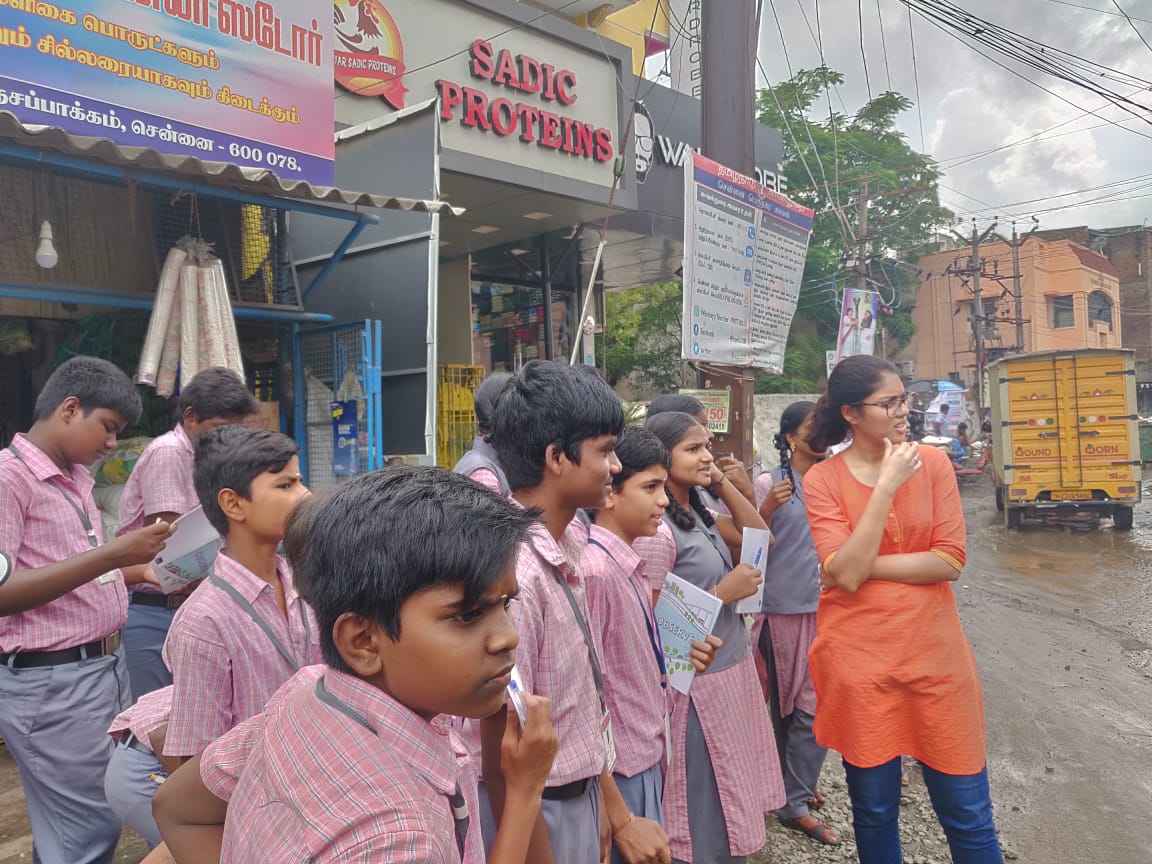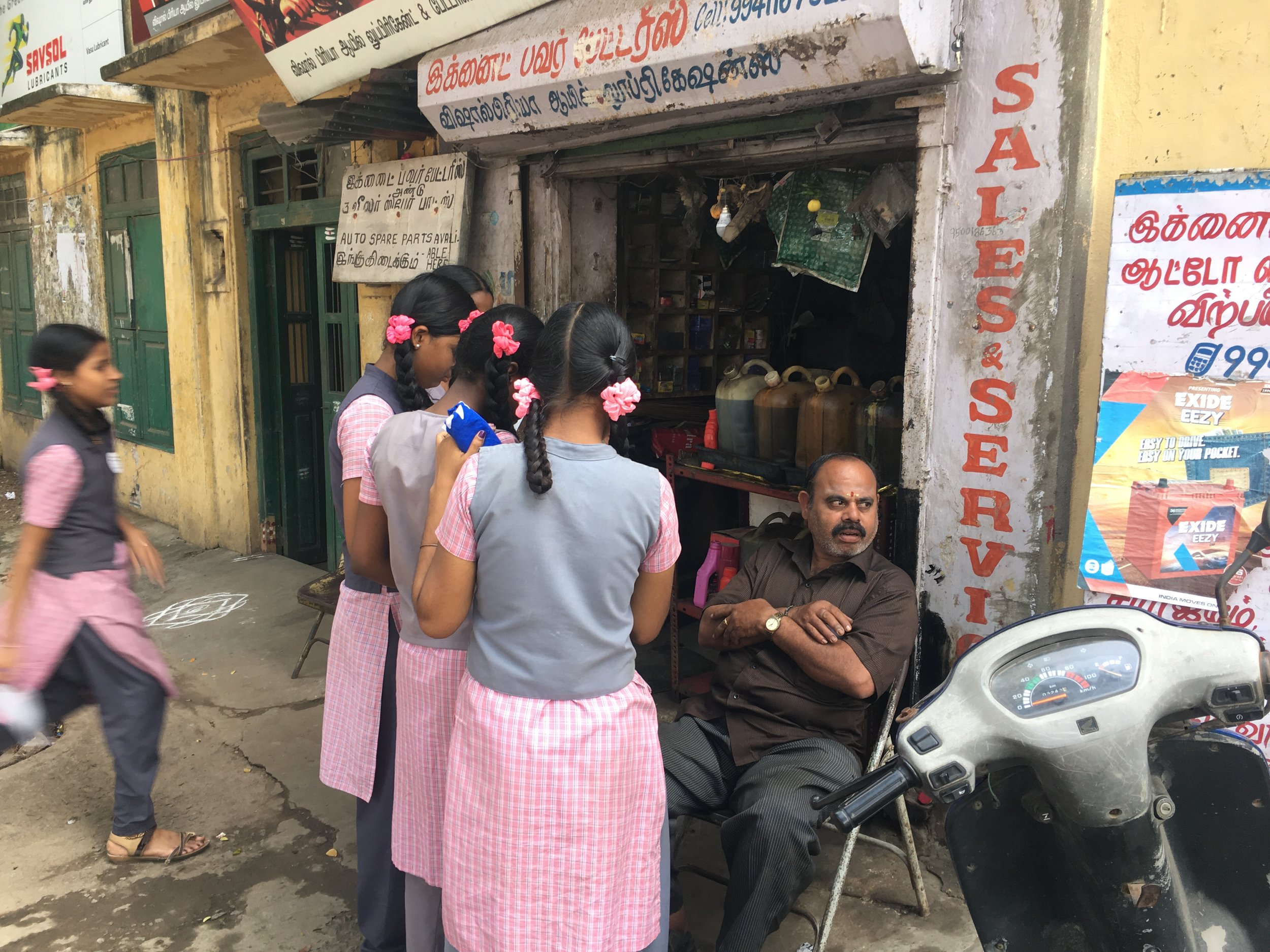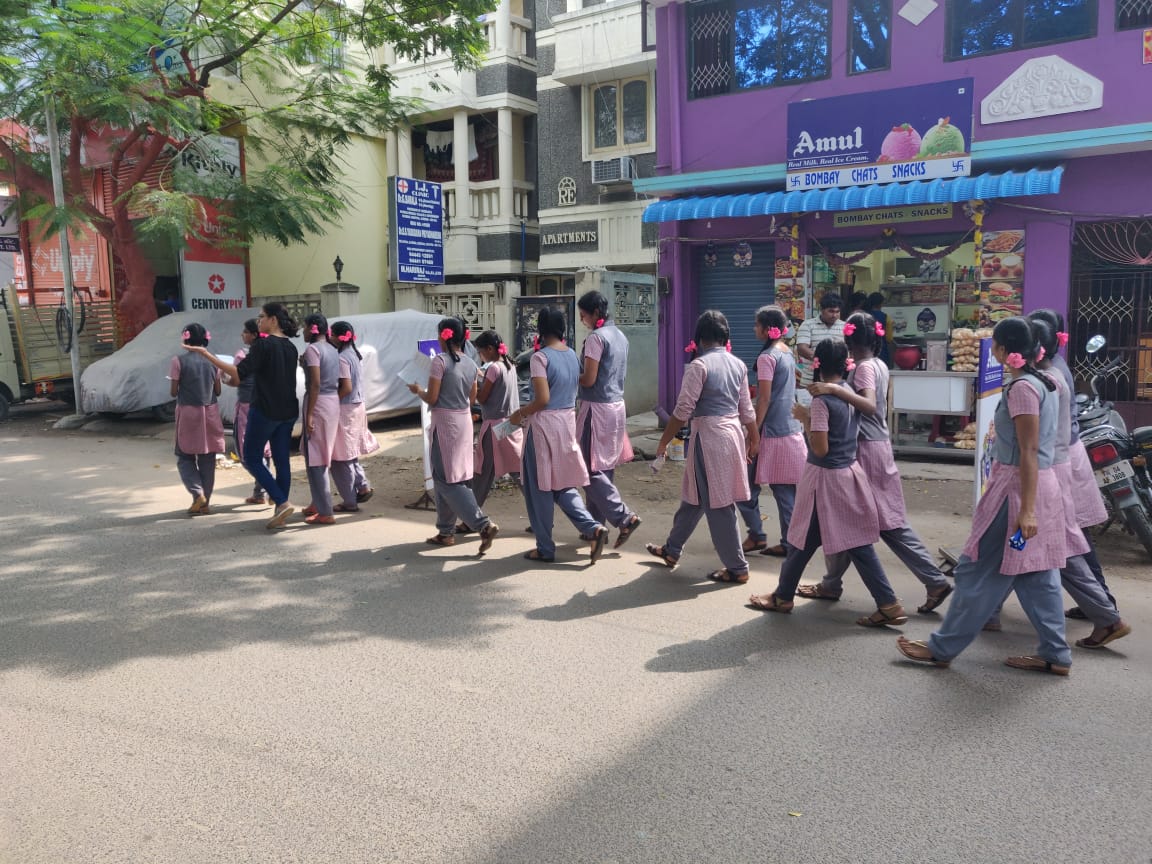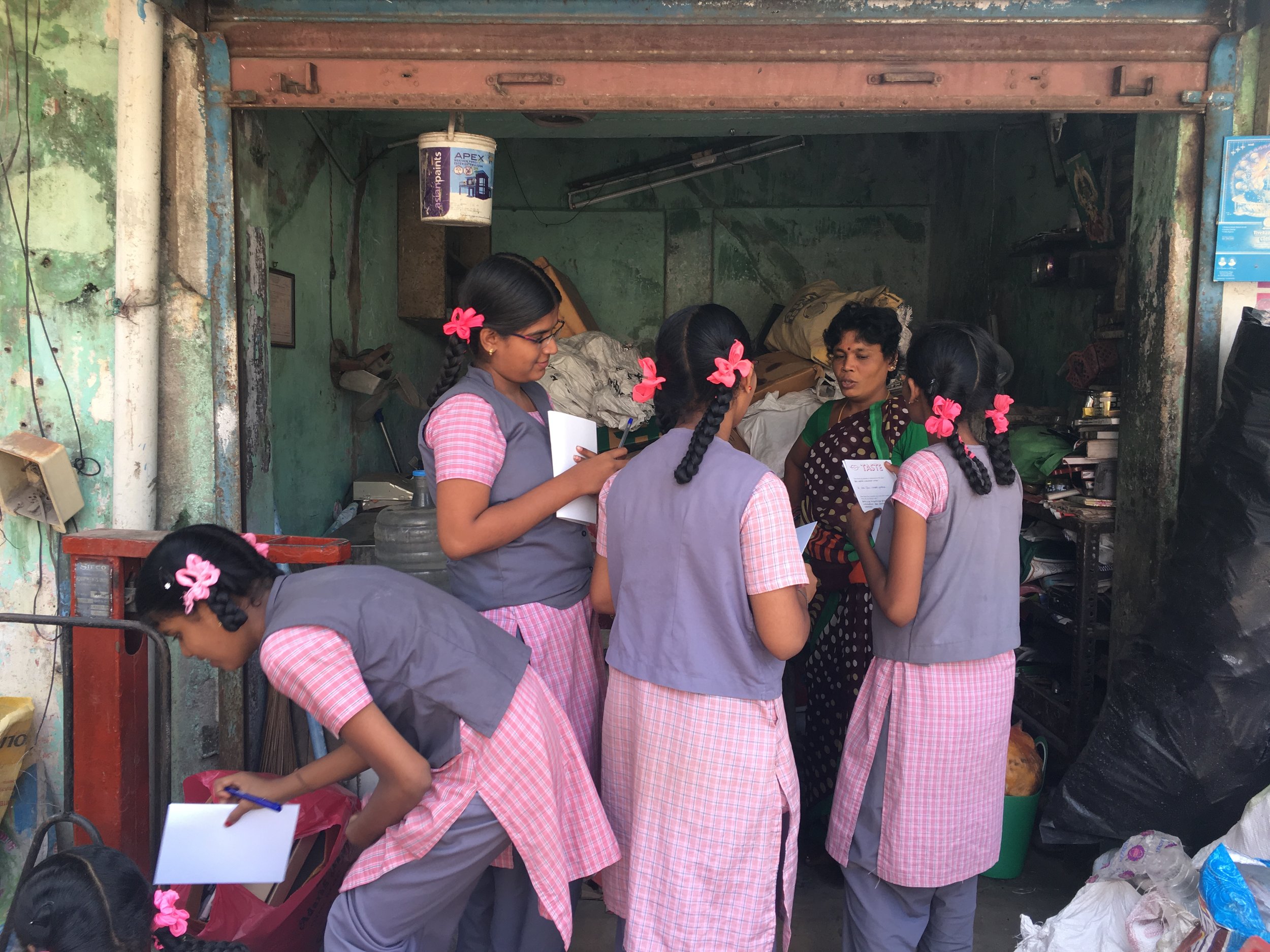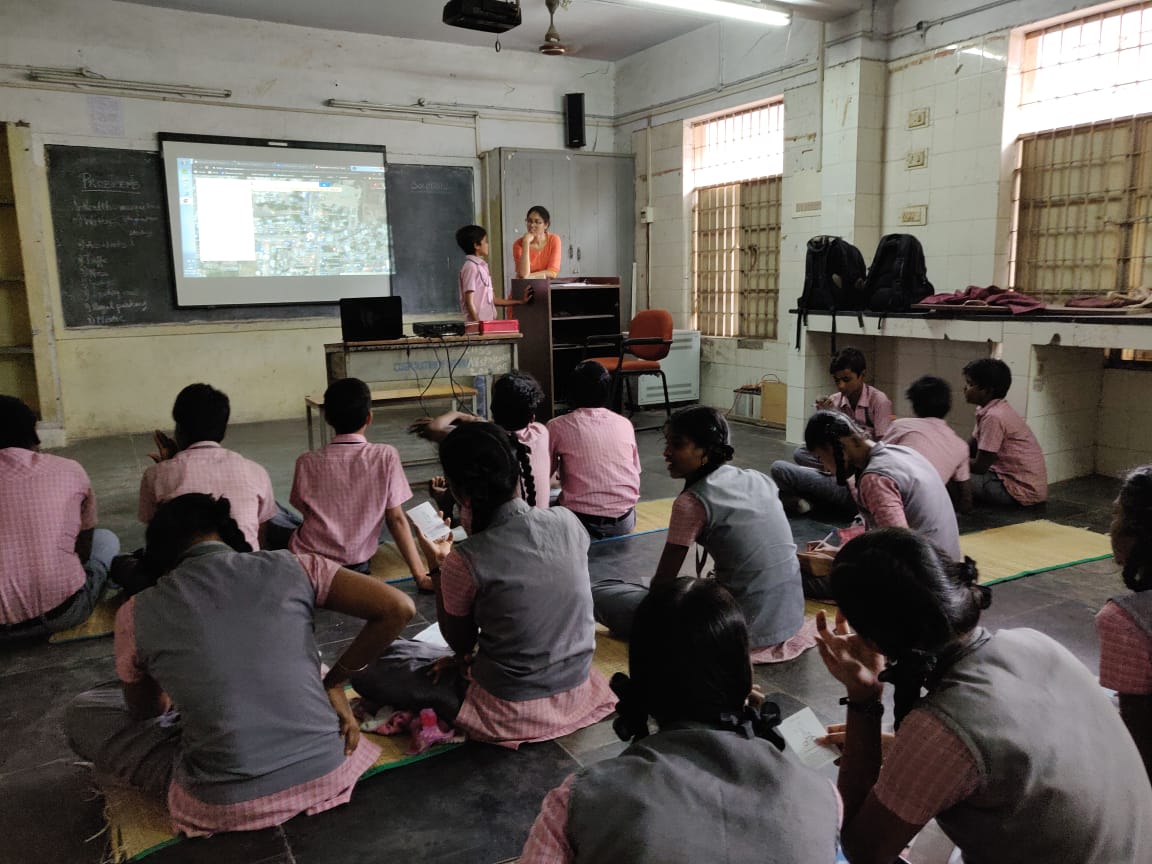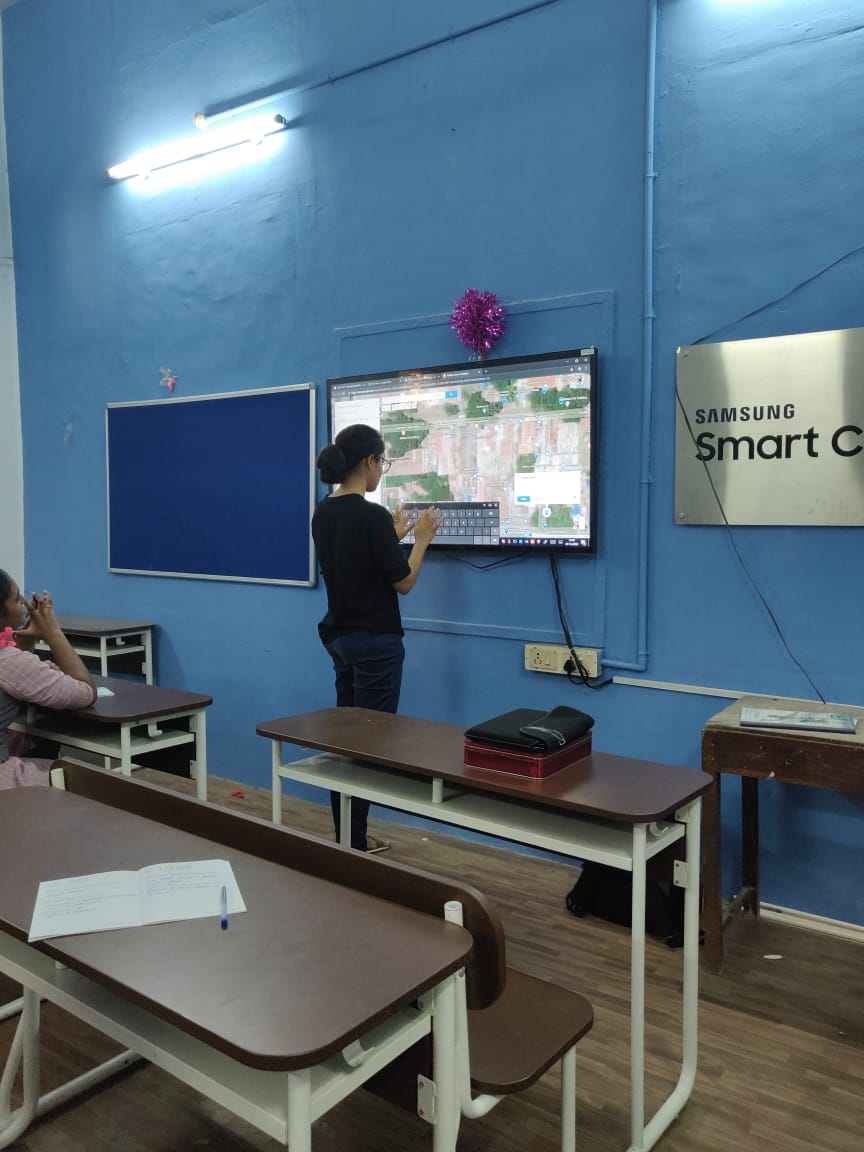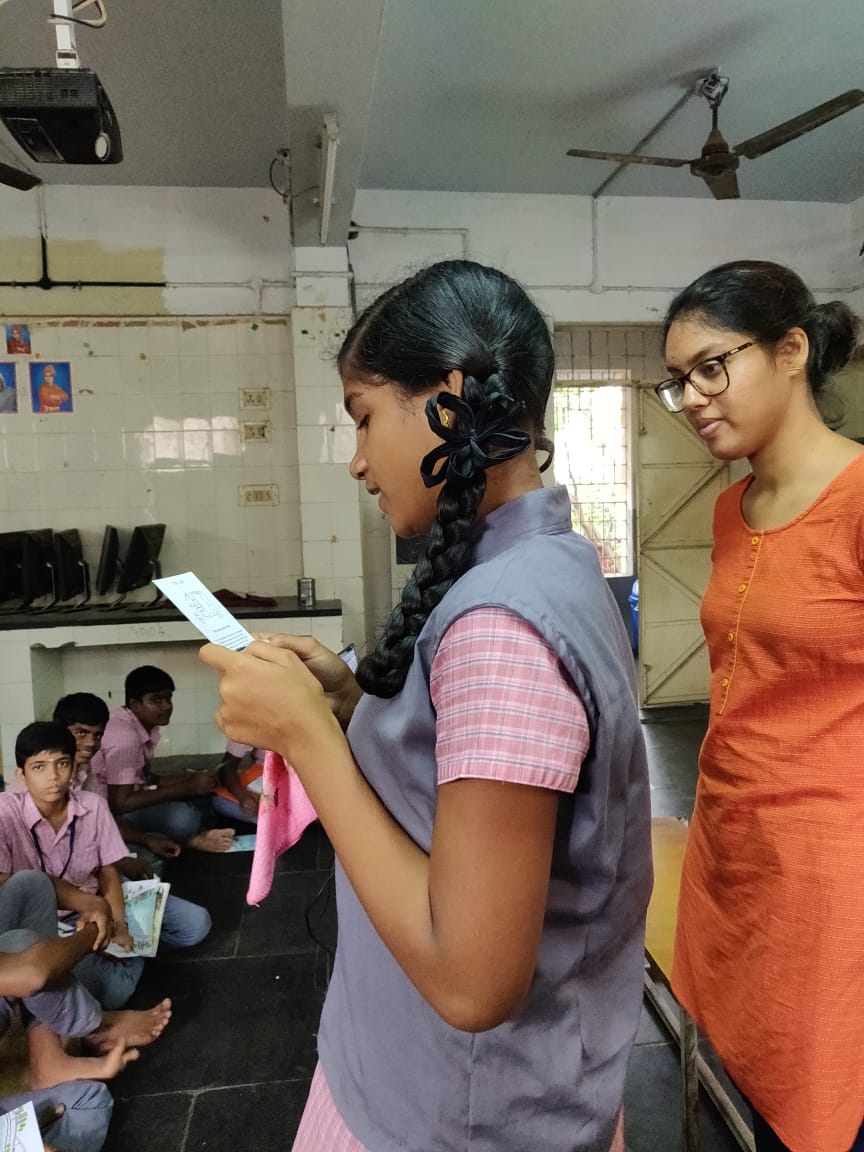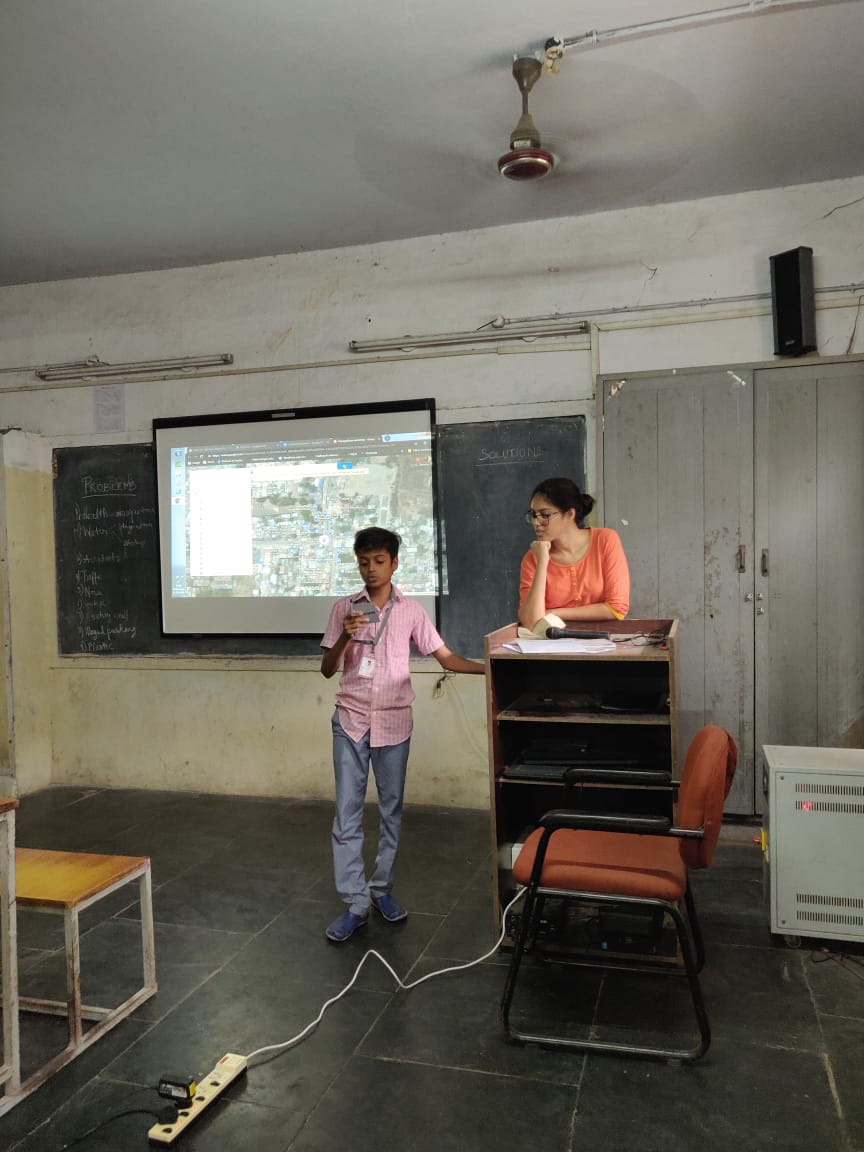The Observe! workshop series is now live in the city of Chennai in India. This time we have initiated the workshops with students from public schools or otherwise called government/ corporation schools. These schools are run by the city corporation and it is unlikely that they get as much exposure as the students in private schools. Consequently, it is only fitting that Jane Jacobs’s vision, ideas and the Observe! workshop reaches them first. We aim to empower these children to take up responsibility of their neighbourhoods and work with the government in making their neighbourhood and the city of Chennai a better place to live.
A series of four workshops was conducted with the public schools in Chennai. Each workshop had around 20-25 participants from 9th standard with the students actively engaged throughout the workshop. The discussions with the students across the four schools were both enlightening and inspiring.
04-12-2018 : Chennai Girls Higher Secondary School, Nungambakkam
05-12-2018: Chennai Higher Secondary School, Nesapakkam
06-12-2018: Chennai Higher Secondary School, Virugambakkam
07-12-2018: Chennai Girls Higher Secondary School, Choolaimedu
Introduction session
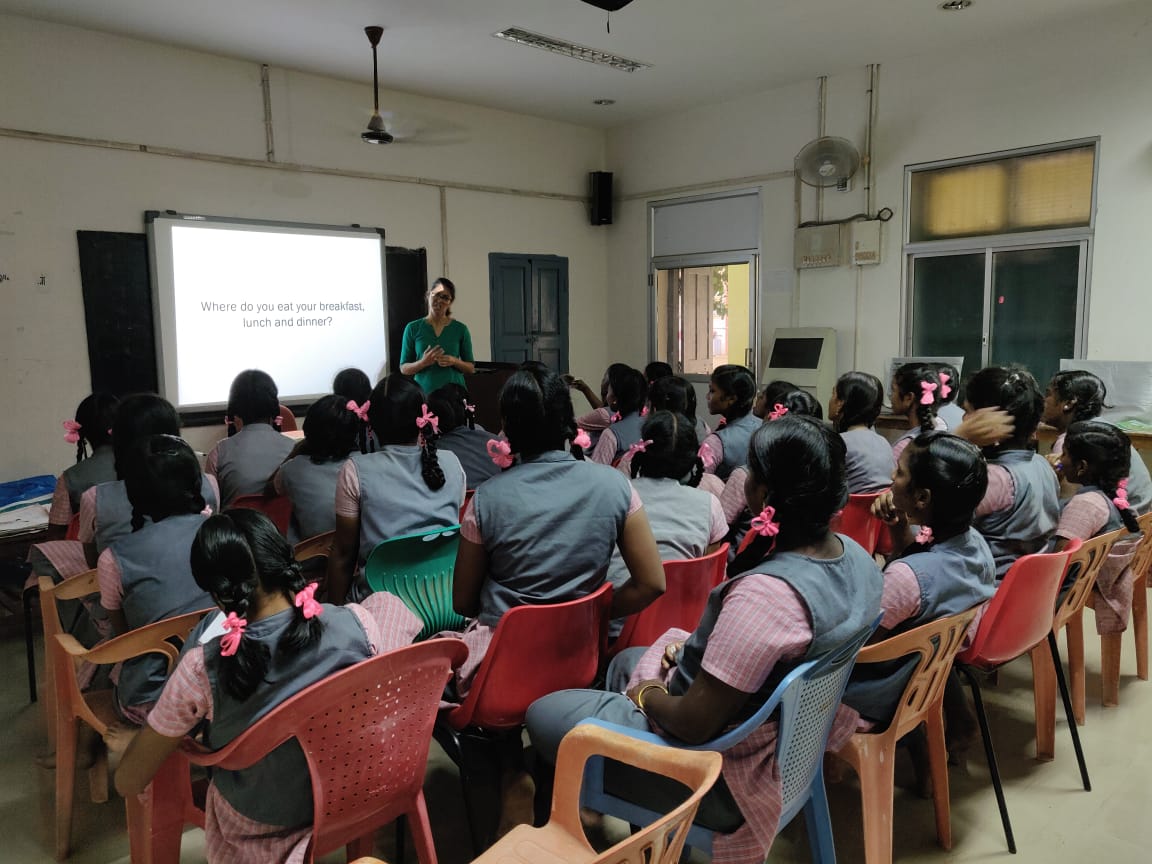
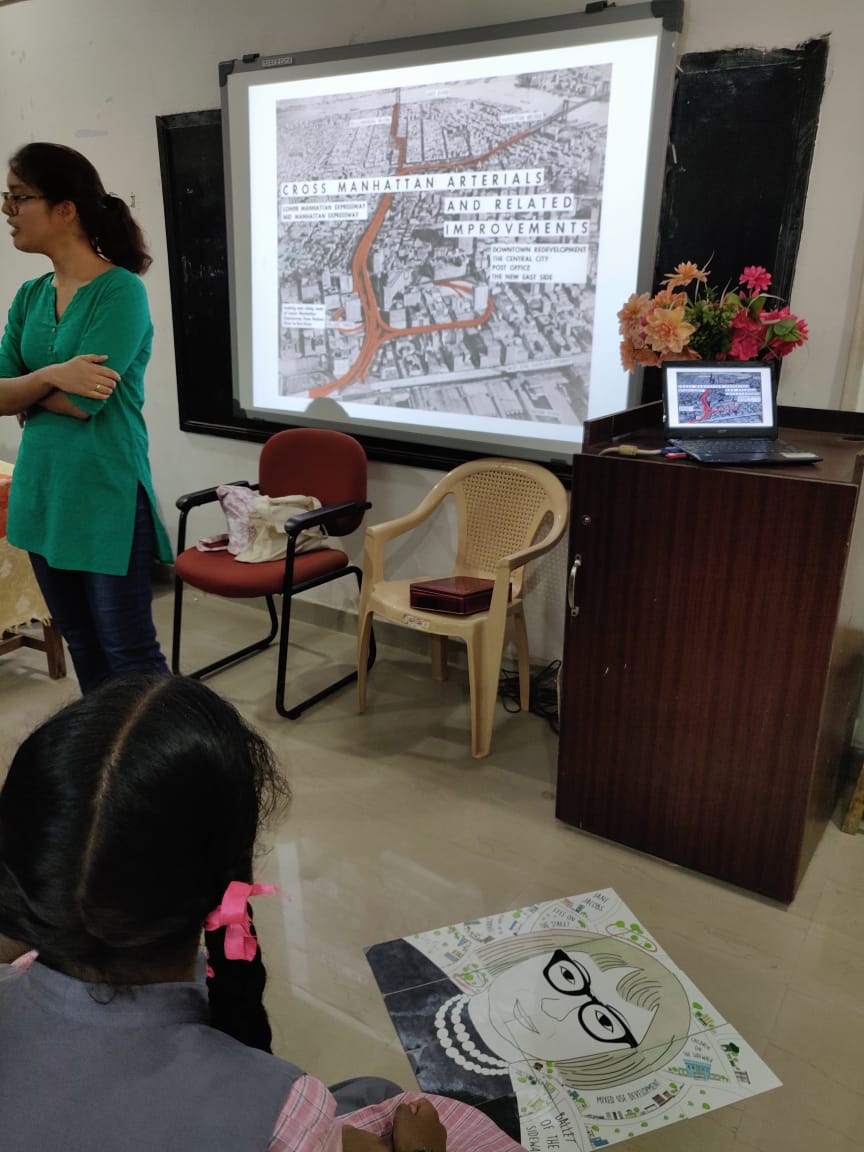
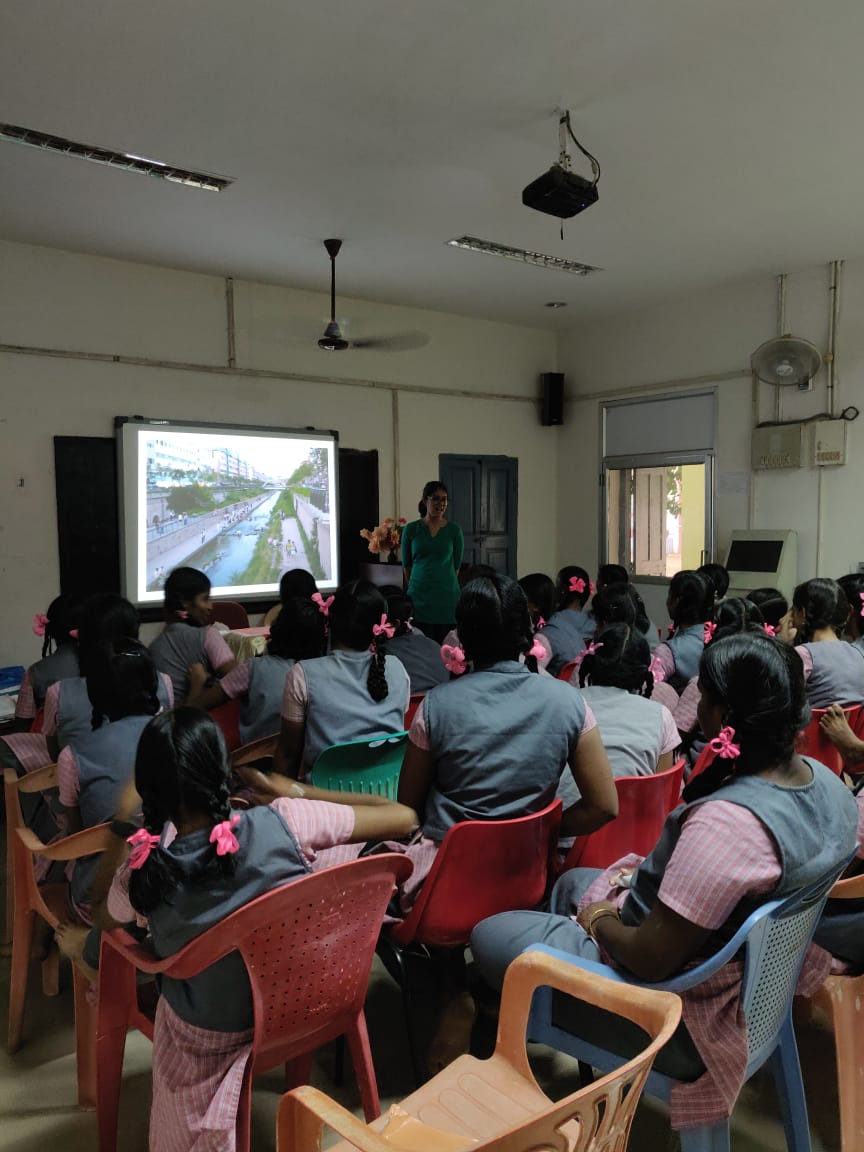
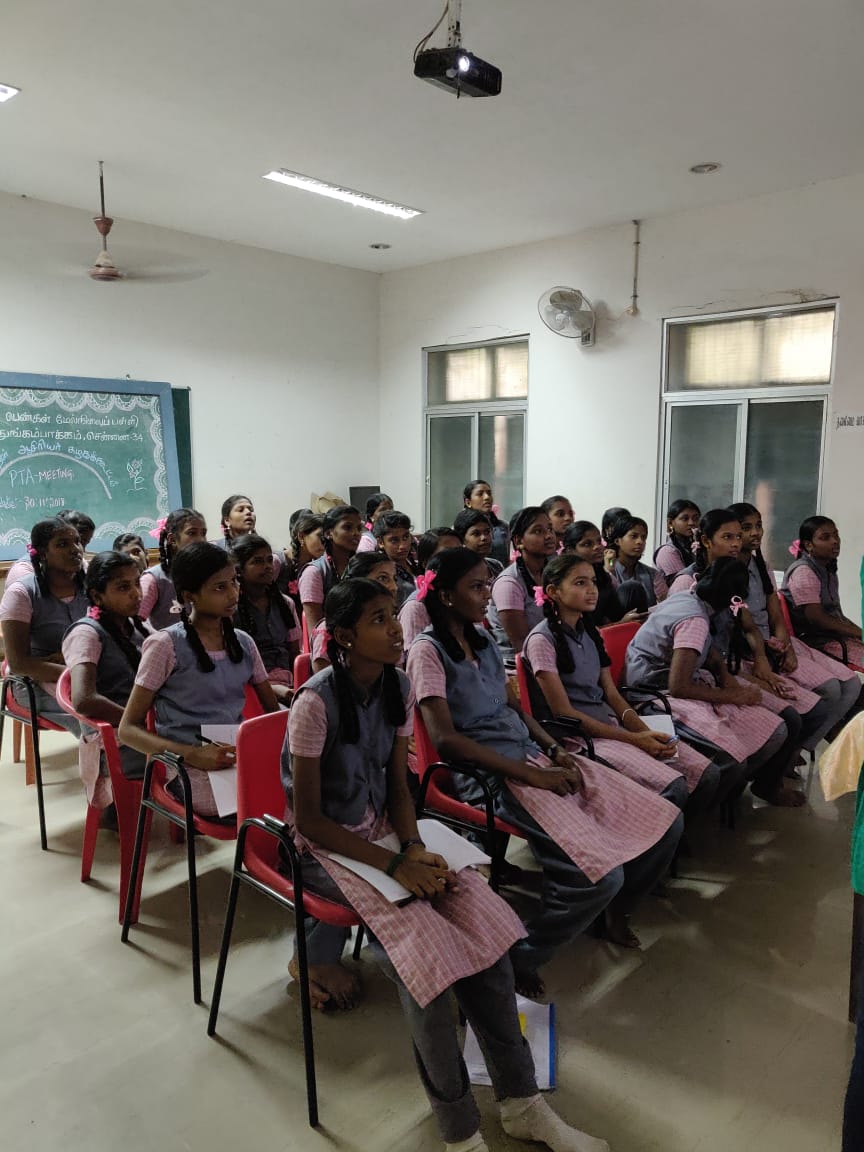

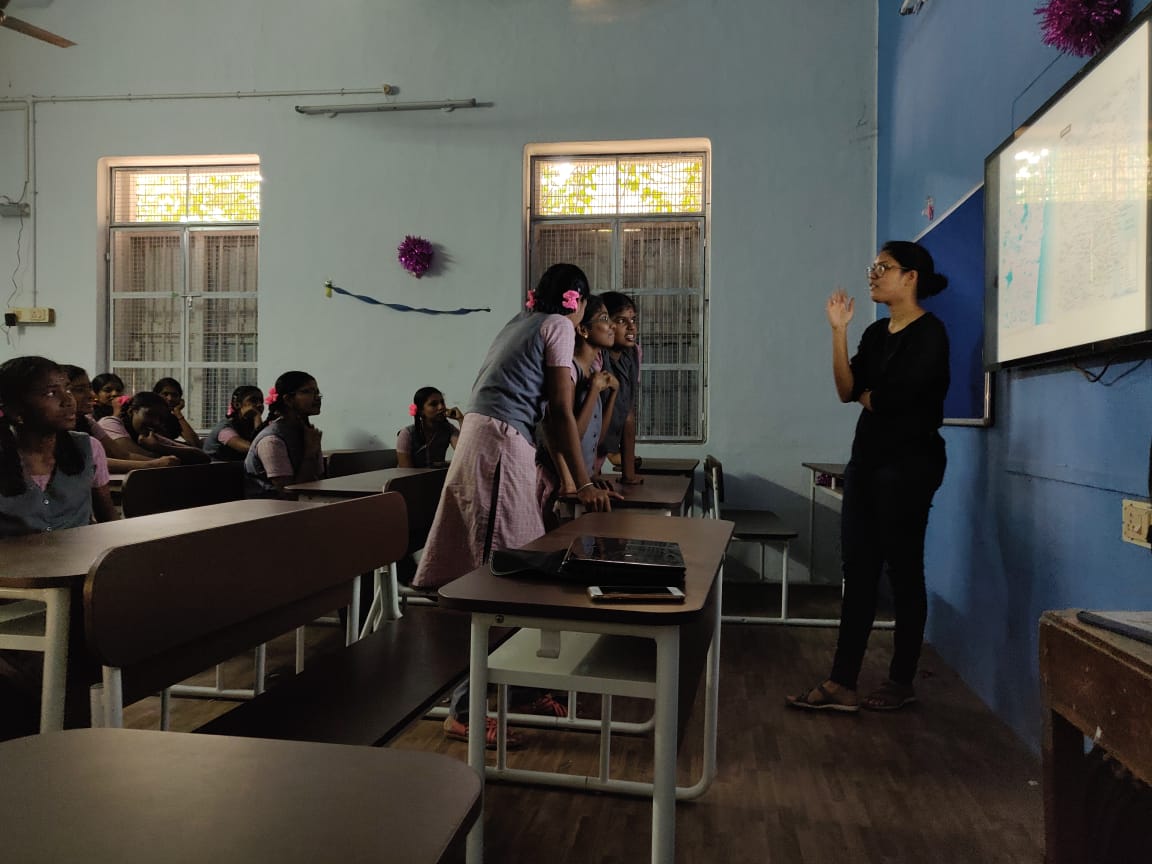
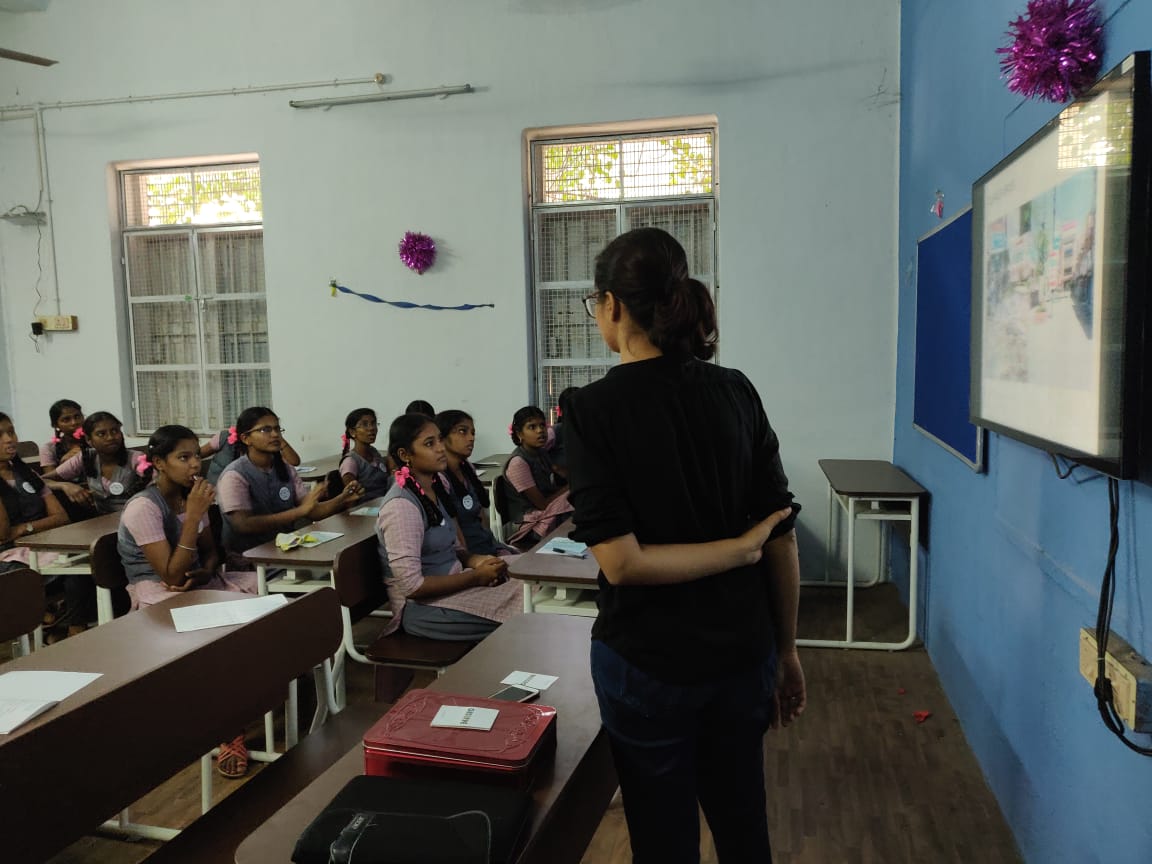
The workshops began with a presentation introducing the students to the concept of what makes a city and the dynamic components a city is comprised of. It started off with activities performed by each student throughout the day and noting how each activity linked to resources and infrastructure in the city. For example, one of the questions asked what students did as soon as they woke up. Some said that they would brush their teeth and that activity was linked to where they got the water, how does the city get its water, what measures we take to conserve the water and the mounting water crisis in the city and what causes it. Some others said they would use the toilet once they wake up and that led to a discussion about where the sewage goes, how sewage and sullage is disposed in the city, and what measures should be taken before sewage is let into the city’s water bodies. There were discussions about the students’ food practices, the way food waste is handled in Chennai and the huge waste dumps in the city’s periphery.
Showcased to the students was a set of before and after photos of cities around the world that transformed their spaces. It helped students imagine and gain confidence that Chennai could also be transformed and that citizens should share the responsibility in transforming it.
Neighbourhood Walk - The five senses guide
The Observe - five senses bilingual guide was handed to the students and the five sections were explained to the students. It was important for them to understand how to observe their neighbourhood and what is the means to observe it. The four schools were placed in very different neighbourhoods and therefore the surroundings were different from each other.
Nungambakkam school - The school despite being in an affluent area was surrounded by many low income settlements. The students and the Observe! team went on a neighbourhood walk from the school through one of these low income settlements. Many of the students in the workshop lived in this neighbourhood and therefore had a lot of insight about the issues prevailing here. We identified many hotspots for garbage and its surrounding spaces. Some of the other issues were stagnation of sewage and rainwater and its associated health problems. There was a sports stadium next to school and the students highlighted the role it played in their everyday lives. The zonal office was also in the neighbourhood, which gave the students the ability that they could voice their concerns and ideas directly to the officials.
Nesapakkam school - The Nesapakkam higher secondary school was placed in a thoroughfare connecting different neighbourhoods in Chennai. Despite the heavy traffic congestion in the neighbourhood, the roads were not designed to calm the speeding vehicles or ease the congestion. The students pointed out the illegal parking in the roads and the uneven roads that cause traffic issues themselves. There were health issues leading to the rise in mosquitoes in these areas. There were dumpsters with overflowing garbage in many junctions.
Virugambakkam school - The Virgambakkam school was located next to a market and therefore faced a solid waste management issue. The vegetable and fruit waste from the market were disposed irresponsibly in the streets. This neighbourhood also had a safety issue where thefts had occurred in multiple houses over the past six months. As a result, some of the houses had installed cctv cameras and the city corporation had issued notices saying that the streets were going to be monitored through cctv cameras that were to be installed. Additionally, some of the streets were in low lying areas and so during rainfall face heavy water stagnation.
Choolaimedu school - Though the neighbourhood walk was only for a short while, the students conducted several interviews with the locals to gather information about the urban problems in the area. We sighted many hotspots for garbage. There was an empty plot of land which had become a dump yard overtime. There was a sense of religious harmony in the area owing to temples and churches sharing compounds along the same street. The locals reported problems revolving around solid waste and unorganized traffic in the streets. We also saw many stretches along the streets that had religious paintings on the wall and therefore people did not litter in these areas. Students picked up on this as a great way of using religious beliefs to keep our streets clean.
Collective Digital Mapping
Following the neighbourhood walks, the students penned down their observations in the five senses guide handed to them. We then spatially mapped these observations on to a digital map. The students showcased great enthusiasm throughout this exercise.
It was the first time that they were shown their schools and its surroundings on a map and the possibility of mapping their personal observations on it excited them to a great extent. Many participants also went beyond the neighbourhood walk and mapped issues in the surrounding area. This exercise made them understand the modern mapping technologies and that local issues can be geo-tagged.
Mapping by Nungambakkam school participants
Mapping by Nesapakkam school participants
Mapping by Virugambakkam school participants
Mapping by Rotlers Street, Choolaimedu school participants
Stakeholder role play exercise
The mapping exercise was followed by the stakeholder role play exercise where the students were handed character cards. The students assumed the roles of the characters detailed in the cards and reflected on the issues they mapped in their neighbourhoods. They came up with solutions that could be incorporated in their neighbourhoods to solve the problems that were sighted. Students came up with ideas on how to redesign the streets; how the parks could be redesigned to include compost pits for biodegradable waste; local ideas on how to keep the neighbourhood clean; measures on how to improve surveillance, etc.
Micro-grants programme
The participating students felt empowered by the day’s workshop and were filled with the energy to do something in their neighbourhood. This was the right time to introduce the micro-grants to them. The micro-grants programme is an initiative to empower the students to ideate, propose and take up a project in their community that targets a local urban issue. Any number of groups of students can propose ideas with the following details:
What is the project and what is the need for the project?
Where is the project located? Is it public or private land? If it is private land, will the owner agree to lending the space?
Who will be benefited by the project?
Who are the stakeholders that will be involved in implementing the project?
Have you spoken to all the stakeholders and have they bought in to the solution for the problem you have identified?
What is the cost of the project and who will implement the project?
Time taken to complete the project?
The students were informed that best ideas from their submissions may be selected and funded by the Center for the Living City and other local partners, and that we would handhold them in implementing the project along with the local community. Students were excited by the prospect of creating actual change in their neighbourhood and promised to come up with several ideas.
Certificate Distribution
At the end of the day certificates were distributed to the students to make them feel accomplished and to encourage them to take things forward. I look forward to the many different ideas that we will receive and the many different ways we will be transforming these communities.
CGHSS, Nungambakkam
Team: Abinaya Rajavelu & Vidhya Mohankumar
CHSS, Nesapakkam
Team: Abinaya Rajavelu & Manasa Ramanathan
CHSS, Virugambakkam
Team: Abinaya Rajavelu & Manasa Ramanathan
CGHSS, Choolaimedu
Team: Abinaya Rajavelu & Manasa Ramanathan

